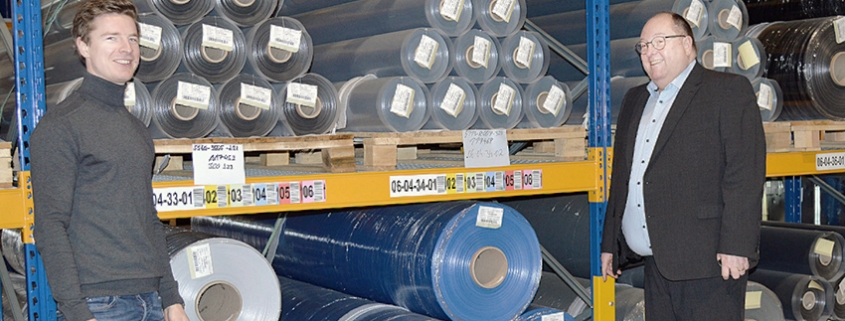Stabilized Supply Chain
Interview with Heytex-Management on current market situtation.
Heytex has stabilized its Supply Chain to continuously provide reliable high quality products.
Fabian Kampsen and Robert Lerch represent the Management Board of the Heytex Group. Fabian is a “home grown” Heytex Manager and since 2020 in the position of Commercial Director. Robert came to Heytex some 4 years ago being the Global Procurement Director with a proven record from various international assignments in different industries. Regarding the current market situation for Technical Textiles, both got together reflecting on the actual developments.
Fabian: Robert, a major key for success in sales is a stable supply chain in combination with competitive raw material prices to provide reliable, high quality and competitive products to our customers.
How do you see recent raw material developments?
Robert: Our textile procurement mainly from Asia is strongly influenced by the instable availability of containers and vessels. However, we were able to sign deals with large European forwarders to provide a secured supply chain for our factories in Germany.
Though we secured the deliveries, we were not able to avoid all cost effects along with the shortage of available containers and vessels. Sea Freight from Asia raised up to 3-4 times the cost of 2020.
Fabian: Currently we see a divided picture in terms of sales: While especially the graphics industry is still on a very low level, we see a strong increase in technical applications, e.g. in truck tarps, dock shelters or farm applications.
How does this overall increase in volume effect our supply chain?
Robert: Unfortunately, the lately installed overcapacities of Polyester yarns from Asia, are not offsetting the increasing raw material prices. High rising prices can only be compensated partly by additional volume bundling.
Fabian: We are known for providing reliable and competitive products. To ensure this for the future we need to pass on some of the recent cost increases to our customers.
As cost increases are always difficult for our customers, please tell me what preventive actions have been taken from our side to avoid such a situation?
Robert: Well, as part of our group business model we implemented the elimination of sole source supplies already a couple of years ago.
This risk management action, together with the use of alternative formulations, compensates for a shortage of supply, particularly for plasticizers, PVC resins and the textiles we use.
Fabian: Do you consider these recent developments to be solved on short notice?
Robert: Volume shifting of our demands between the approved vendors help us to build and defend a solid supply chain. The supply situation will still be critical until end of this summer but is secured for our customers’ demands. Unfortunately, we cannot predict when prices will return to normal conditions.
A good supply network and proactive market communication is the key to be successful during these challenging times.
Fabian: You know that we aim for an open and transparent communication like it should be in a partnership.
Despite the recent news of supply shortages why did the situation
improve again?
Robert: Well, during these challenging times, transparent communication with our suppliers is one of the reasons. Also, one of the leading suppliers for plasticizers lifted its Force Majeure unexpectedly fast.
These circumstances in combination with multiple, approved sources and our other risk management initiatives, lead to an overall secure supply chain. The limited availability of raw materials has unfortunately a still clear and immediate impact on prices.
Stabilized Supply Chain - Interview March 2021

 Image: Heytex Group
Image: Heytex Group